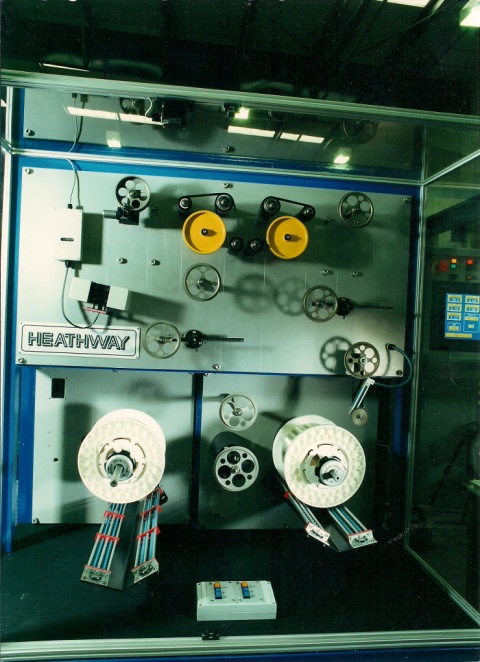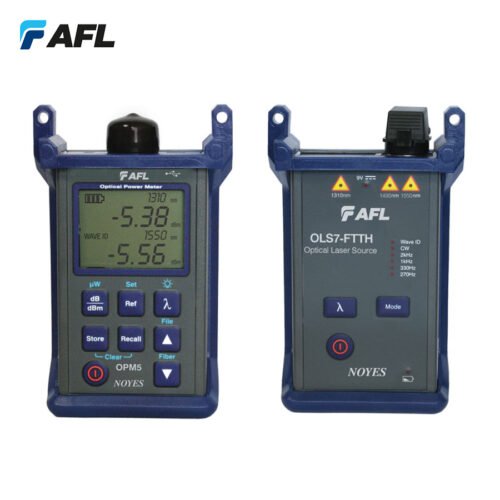Recognizing How an Optical Measurement System Enhances Accuracy in Industrial Applications
Optical measurement systems play a necessary duty in improving accuracy throughout numerous industrial applications. By leveraging advanced technologies such as laser interferometry and 3D imaging sensing units, these systems use high-resolution, non-contact measurements. This capacity decreases the danger of damaging sensitive elements while ensuring precision. The influence of these systems prolongs beyond mere measurements. Discovering their advantages, applications, and future trends discloses a complex landscape of development and challenges that qualities more detailed assessment.
The Fundamentals of Optical Measurement Systems
Optical measurement systems function as vital tools in numerous industrial applications, providing specific information collection and evaluation. These systems utilize light as a primary methods of measurement, leveraging optical concepts to examine dimensions, placements, and surface area attributes of objects. They integrate components such as lasers, electronic cameras, and sensing units, which function together to catch high-resolution pictures and data.
The technology allows non-contact dimensions, minimizing the risk of damaging sensitive parts. Optical measurement systems are flexible, locating utility in quality assurance, assembly verification, and dimensional evaluation throughout various industries. They are especially efficient in atmospheres where traditional measurement methods may fall short, such as gauging intricate geometries or observing rapid motions.
As markets remain to develop, the assimilation of optical measurement systems will stay crucial for making certain precision and effectiveness, inevitably boosting product quality and functional productivity in various making procedures.
Secret Technologies Behind Optical Measurement
Secret technologies such as laser interferometry methods and 3D imaging sensing units play a crucial duty in the efficiency of optical measurement systems (robotic vision). These technologies allow precise dimensions and in-depth evaluation in various industrial applications. Recognizing their capabilities is vital for using the complete possibility of optical measurement systems
Laser Interferometry Techniques
Many laser interferometry strategies have revolutionized the field of optical measurement, using extraordinary precision and accuracy in various industrial applications. These methods use the disturbance of systematic light waves to gauge range, displacement, and surface area irregularities with nanometer-level accuracy. Typical techniques consist of Michelson interferometry, which splits a beam and evaluates phase shifts, and Fabry-Pérot interferometry, known for its high resolution in gauging tiny changes. Additionally, laser Doppler interferometry uses regularity changes to evaluate rate, making it important in dynamic dimensions. The flexibility of these techniques enables their integration into varied production procedures, boosting quality assurance and making certain adherence to strict tolerances. Therefore, laser interferometry continues to play a critical function beforehand commercial measurement standards.
3D Imaging Sensors
Advancements in measurement modern technology have actually caused the development of 3D imaging sensing units, which play a significant duty in optical measurement systems. These sensing units capture three-dimensional data with different strategies such as triangulation, time-of-flight, and organized light. By properly rebuilding the shape and measurements of things, 3D imaging sensing units enhance the accuracy of dimensions in industrial applications. They offer real-time feedback, facilitating top quality control and making certain that elements satisfy strict specs. Furthermore, their capability to operate in tough environments, such as varying lighting conditions, makes them very useful in producing procedures. As industries progressively adopt automation, the integration of 3D imaging sensors right into optical measurement systems is expected to drive further improvements in efficiency and accuracy.
Benefits of Optical Measurement in Industry
Standard measurement techniques have actually long been the criterion in industrial setups, optical measurement systems provide considerable advantages that improve precision and efficiency. These systems use light to record information, causing high-resolution measurements that are commonly unattainable with conventional methods. The non-contact nature of optical measurements minimizes the danger of damaging delicate components during the analysis process. Furthermore, the speed of optical dimensions permits quick data procurement, facilitating timely decision-making in hectic industrial settings.
Optical systems are versatile, capable of gauging numerous materials and shapes without the requirement for considerable recalibration. This flexibility adds to improved process and performance. Additionally, the automation potential of optical measurement systems lessens human address mistake, making certain regular top quality control. On the whole, the assimilation of optical measurement modern technology represents a dynamic change in the direction of improved accuracy and integrity in commercial operations, inevitably resulting in enhanced item high quality and operational efficiency.
Applications of Optical Measurement Systems

Optical measurement systems play a critical duty in improving production process optimization by giving accurate information for decision-making. These systems assure quality assurance assurance through real-time tracking and evaluation of manufacturing metrics. As markets progressively adopt these innovations, their effect on performance and item reliability becomes evident.
Production Process Optimization
Enhancing manufacturing procedure effectiveness is significantly dependent on the combination of optical measurement systems. These systems offer real-time information on numerous specifications, allowing makers to assess processes with a high degree of accuracy. By enabling specific dimensions of dimensions, surface characteristics, and product homes, optical measurement systems promote the identification of inadequacies and traffic jams in assembly line. The prompt comments from these systems equips engineers to make educated decisions, resulting in enhanced machining, assembly, and finishing processes. The capacity to monitor conditions continuously allows for adaptive changes, reducing downtime and waste. As markets go for greater performance and lowered functional costs, optical measurement systems become critical devices for boosting manufacturing procedure optimization.

High Quality Control Guarantee
The combination of optical measurement systems substantially influences quality assurance assurance in commercial setups. These systems give specific my response and non-destructive measurements, enabling makers to detect problems and inconsistencies early in the production procedure. By using innovative imaging methods, such as laser triangulation and interferometry, optical measurement systems assure that elements meet rigid specs. This assists in real-time monitoring, decreasing waste and decreasing the danger of faulty products reaching the market. Furthermore, the data accumulated can be evaluated to refine production procedures even more, causing continual enhancement. Eventually, the adoption of optical measurement systems enhances reliability and uniformity in high quality control, fostering greater confidence amongst stakeholders and customers alike in the end products delivered.
Case Researches: Successful Implementations
Numerous markets have actually efficiently incorporated optical measurement systems to boost their operational effectiveness and item quality. In the automobile industry, a famous maker adopted a laser triangulation system to keep an eye on the alignment of automobile components. This implementation greatly reduced setting up errors, leading to boosted security and reduced costs.
In the aerospace market, a leading airplane maker used optical width for accuracy measurements of generator blades, attaining a reduction in making tolerances and far better efficiency standards.
A customer electronics company implemented optical measurement technology during the production of mobile phone displays, resulting in enhanced high quality control and a reduction in malfunctioning products.
These study illustrate just how optical measurement systems not just improve precision however likewise contribute to total functional performance, showing their value throughout different industries. By dealing with details needs, these systems have confirmed to be indispensable devices in modern industrial applications.
Difficulties and Limitations of Optical Measurement
While optical measurement systems use substantial advantages in various commercial applications, they are not without their challenges and restrictions. One major worry is level of sensitivity to environmental conditions, such as temperature variations, humidity, and dust, which can adversely impact measurement accuracy. In addition, optical systems usually need exact alignment and calibration, making them vulnerable to human error throughout configuration and operation. Another constraint is the possibility for disturbance from ambient light, which can distort dimensions and require complicated filtering strategies. Additionally, certain materials and surfaces may present problems, as reflective or transparent characteristics can bring about inconsistent analyses. The cost of top quality optical components and systems can also be an obstacle for some industries, restricting widespread fostering. Specialized training is frequently required for employees to efficiently operate and preserve these systems, including to the overall intricacy and functional challenges.
Future Fads in Optical Measurement Modern Technology
As improvements in technology remain to form commercial processes, the future of optical measurement systems is positioned for considerable advancement. Emerging trends suggest a shift towards boosted combination of expert system and artificial intelligence, enabling systems to examine information in real-time, identify patterns, important source and boost decision-making procedures. Additionally, the growth of miniaturized sensing units and progressed optics is anticipated to result in more portable and flexible measurement options, making them available for a broader variety of applications.
In addition, the unification of 3D imaging and high-resolution abilities will certainly permit for unprecedented accuracy in dimensions, which is essential for markets such as aerospace and auto. The promote automation and Market 4.0 will certainly likewise drive the demand for optical measurement systems that can conveniently user interface with various other technologies. As these patterns unravel, optical measurement systems will likely end up being important to achieving greater efficiency and accuracy throughout different industrial markets.

Frequently Asked Concerns
Exactly How Do Optical Measurement Systems Compare to Conventional Measurement Techniques?
Optical measurement systems provide greater accuracy and rate contrasted to conventional techniques - optical fibre diameter analyser. They reduce human error, enhance data collection effectiveness, and provide real-time outcomes, making them increasingly preferred in numerous commercial applications for exact measurements
What Industries Advantage the Most From Optical Measurement Systems?
Optical measurement systems greatly profit sectors such as aerospace, auto, and electronics. Their ability to supply high-precision dimensions improves quality control, lowers manufacturing mistakes, and improves overall performance, making them necessary in affordable production environments.
Can Optical Measurement Systems Be Personalized for Particular Applications?
Optical measurement systems can undoubtedly be personalized for specific applications. By readjusting parameters such as wavelength, resolution, and calibration techniques, sectors can customize these systems to meet one-of-a-kind precision and precision demands efficiently.
What Is the Upkeep Need for Optical Measurement Systems?
The maintenance needs for optical measurement systems normally consist of normal calibration, cleaning of optical elements, and software updates. Sticking to these methods assurances precision, reliability, and durability of the measurement devices in various applications.
How Do Environmental Aspects Affect Optical Measurement Precision?
Ecological aspects, such as temperature level fluctuations, humidity, and dirt, considerably influence optical measurement accuracy. These components can misshape light courses and interfere with sensor readings, ultimately compromising the dependability and accuracy of measurements in commercial setups.